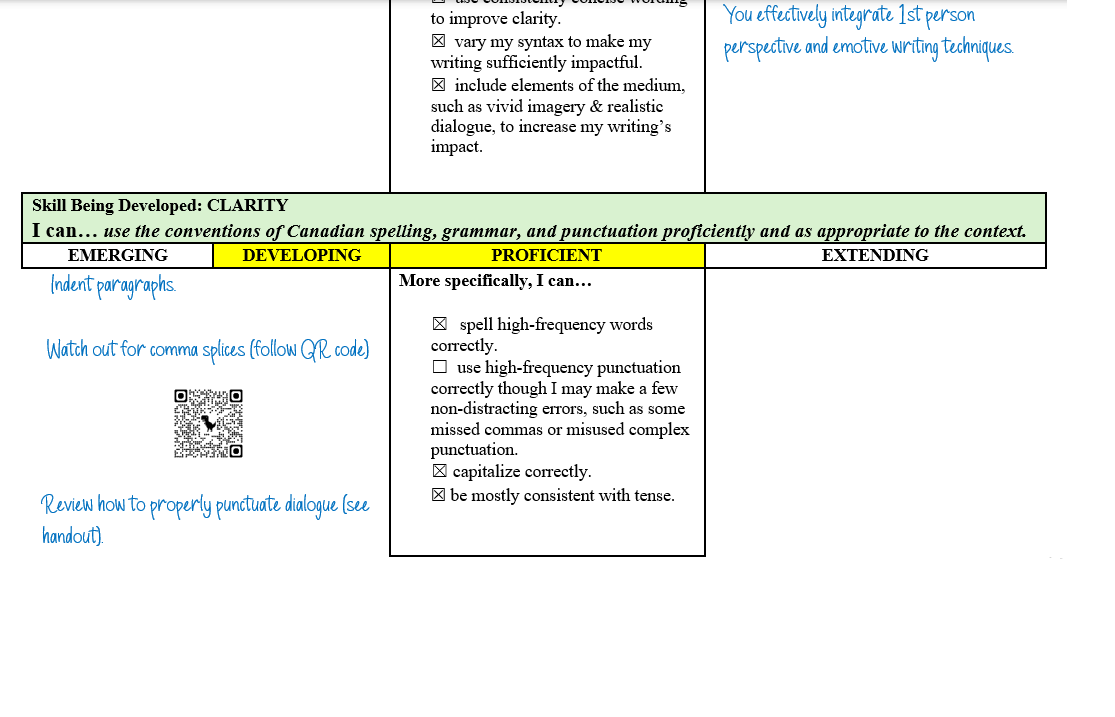How QR Codes can Enhance Your Assessment!
Only recently I discovered the immense potential QR codes have for my assessment practices. Full disclosure, It wasn't even until Covid-19 that QR codes entered my radar. Back then, I remember stressing about having to use such "futuristic" technology to conduct my daily health check. (Unbeknownst to me, QR codes were actually invented in 1994.) However, as I fiddled with my phone's camera, that little black and white checkered square's simplicity became apparent; my smartphone, like magic, quickly connected me from QR code to Excel spread sheet. From there, I began using QR codes in both my handouts and PowerPoints.

For this blog post, I'd just like to discuss two ways I have implemented QR codes into my assessment practices. First of all, I have embedded them on my project handouts' rubric pages as a means of making exemplars readily available for my students. Next, I've learned how to incorporate QR codes in my rubrics as an accompaniment to feedback.
I'll start by explaining the exemplars. I'm a firm believer in exemplars being an essential component of an effective standards-based grading classroom. The words included on even the most descriptive rubrics can only communicate so much. Exemplars are kind of like assessment's "show, dont tell." I don't just explain to students what complexity is; I show them.
For these embedded exemplars to work, I had to save my student exemplars, including Word Docs and PowerPoints, as PDFs. From there, I used one of the many free QR code generator websites (me-qr.com) to create the QR code exemplars. I have started by including both "Proficient" and "Extending" exemplars. This way, students get a glimpse at both the target proficiency level and learning of even greater complexity. They have appreciated having those exemplars one click away.
Another essential tool for deepening our students' understanding is feedback. Whenever I assess a student's level of proficiency for any given curricular competency, I provide them with feedback. Much of that feedback focuses on areas where students can make adjustments. This raises the question: If students didn't demonstrate a specific concept, will they understand the feedback identifying that specific gap in their understanding? Maybe not.
For instance, when assessing a student's understanding of writing conventions and punctuation I'll indicate some areas to address: "Avoid comma splices." However, it's likely many of those students making frequent comma splices may not understand the concept well enough to consistently avoid the punctuation error. That's where the QR codes come in.
Instead of simply telling students to avoid comma splices, I'll input a QR code that connects to a comprehensive lesson on the concept. That way, students will have easy access to the learning they need. I'll also follow up with them later to see if they: A) used the QR code B) need additional support.
When it comes down to it, I want my rubrics and feedback to be more than just a justification for the mark a student received. I want them to be a transformative learning tool. I want my students to view rubrics as a roadmap to deeper understanding.
Technology keeps evolving at a daunting rate. Our assessment practices must do the same. Maximizing the potential of QR codes is one humble way I'm trying to keep up with the times.



Comments
Post a Comment